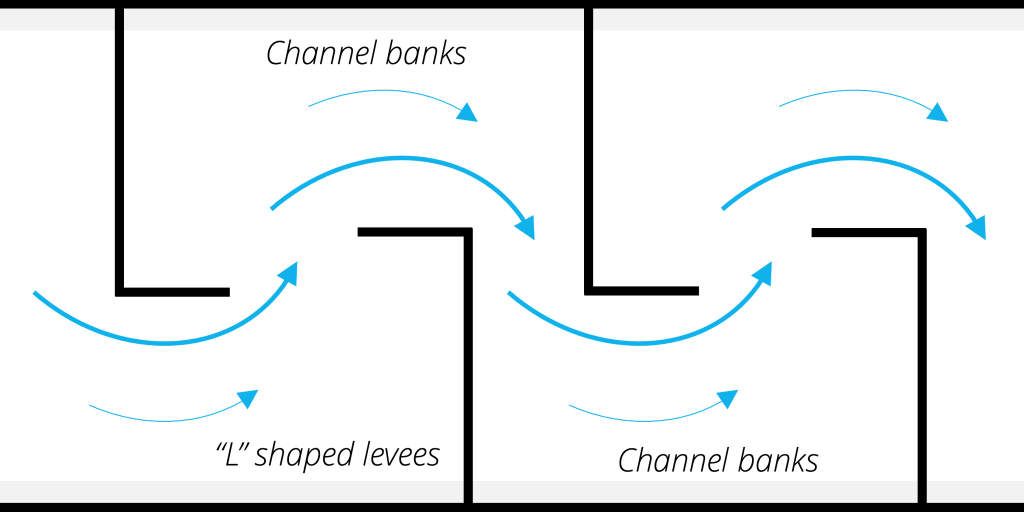
Channel spreading is grouping technologies by which the wetted area of a drainage channel or river bed is artificially increased in order to enhance water infiltration to the aquifer. The drainage channel can be widened, leveled, scarified or dredged. The river flow can also be modified by installing L shaped levees (pcitures above). Recharge is enhanced by inceasing the potential infiltration area and slowing down the flow velocity.
| Typical system capacity scale | Village – Town (≈104m3/year – ≈106m3/year). |
| Geology | Unconfined aquifers. |
| Topography | Natural drainage channels with gentle slopes. |
| Soils | Permeable river bed, sand, gravel. |
| Water source | River water. |
| Pre-treatment | Silt traps may be used to mitigate clogging. |
| MAR main objective | Strategic water storage. |
| Relative cost | Low – moderate. |
Advantages and disadvantages of the system (adapted from IGRAC, 2007):
Advantages
- Low costs technique.
- Simple design, operation and maintenance.
Limitations
- Available land along river beds is often scarce.
- Potential for clogging.
- Vulnerable to destruction during flood events.
Case studies
References
- IGRAC. (2007). Artificial Recharge of Groundwater in the World.
